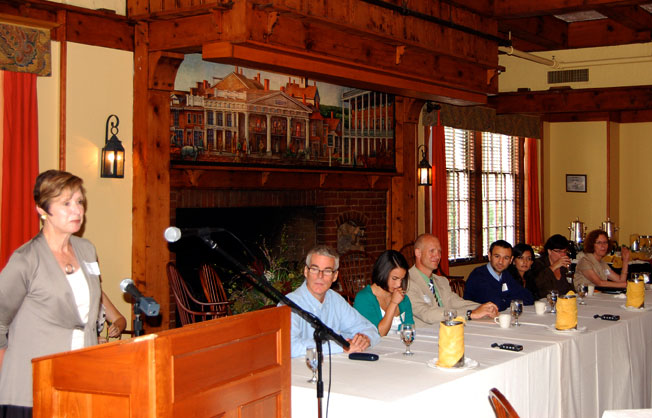
Ellen Kraly, geography professor and director of Colgate’s Upstate Institute, speaks at a gathering at the Colgate Inn.
Nonprofit directors and members of municipal agencies spoke Thursday about how Colgate’s Upstate Institute has made significant, long-lasting contributions that have benefited their groups and the upstate region.
The institute is a powerful focal point for resources at a time when many groups are squeezed by funding cutbacks, said Patricia Hoffman, executive director of the nonprofit organization that runs the Oneida Community Mansion House, a multipurpose National Historic Landmark. Read more






